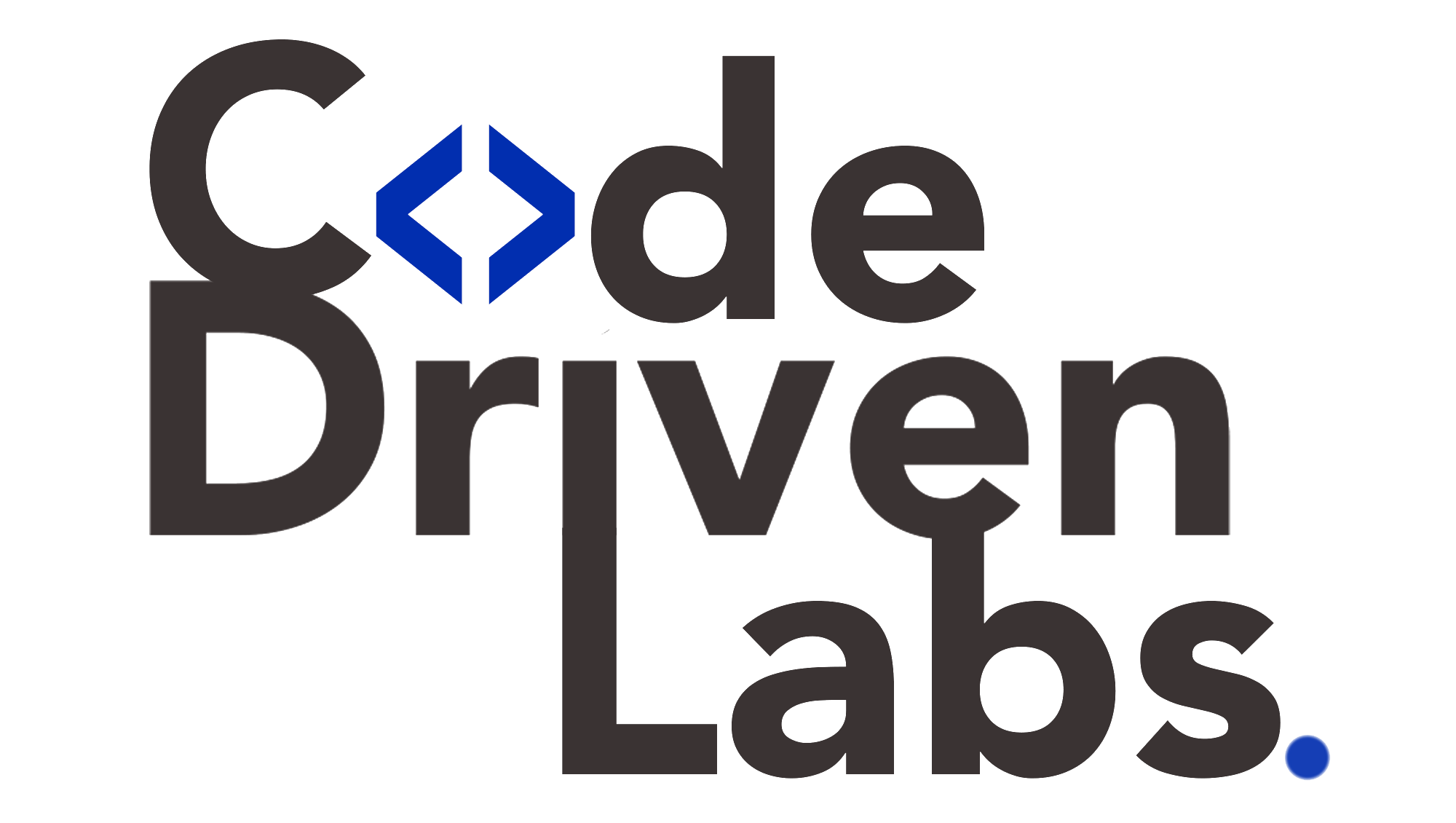Level up your business with US.
- Home
- Tools and Technologies Powering Modern Data Science Services
Tools and Technologies Powering Modern Data Science Services
June 20, 2025 - Blog
Tools and Technologies Powering Modern Data Science Services
In the last decade, data has become the most valuable asset for businesses, governments, and institutions. Data science, the discipline that transforms raw data into actionable insights, is driving innovation across industries—from finance and healthcare to retail and education. But data science doesn’t operate in a vacuum. It relies on a wide array of tools and technologies that enable the collection, storage, processing, analysis, visualization, and deployment of data-driven solutions.
This blog explores the critical tools and technologies powering modern data science services and highlights how Code Driven Labs uses these technologies to create scalable, impactful, and business-ready solutions.

The Ecosystem of Data Science Tools
Data science is inherently multidisciplinary. It blends programming, mathematics, statistics, data engineering, and business acumen. Therefore, the technology stack behind data science services includes several layers of tools and platforms, each serving a specific function:
-
Data Collection and Extraction
-
Data Storage and Management
-
Data Cleaning and Preparation
-
Model Building and Machine Learning
-
Data Visualization and Reporting
-
Model Deployment and Monitoring
Let’s explore each category and the most commonly used technologies within them.
1. Data Collection and Extraction Tools
Before data can be analyzed, it must be collected from various sources—websites, APIs, databases, sensors, and even physical records. Modern tools help automate this process and ensure scalability.
Key Tools:
-
Python (requests, BeautifulSoup, Scrapy): Widely used for web scraping and data ingestion.
-
Apache NiFi: Automates data flows between systems.
-
Talend / Alteryx: GUI-based tools for ETL (Extract, Transform, Load) processes.
-
APIs and Webhooks: REST APIs are essential for real-time data from third-party services like Google Analytics, Twitter, and CRM systems.
Code Driven Labs’ Role:
Code Driven Labs builds custom data ingestion pipelines tailored to client systems, whether it’s extracting data from IoT devices, ERP systems, or social media platforms. They ensure that data is collected securely and formatted efficiently for further processing.
2. Data Storage and Management
Once collected, data must be stored in a secure and scalable environment. This can range from structured relational databases to unstructured NoSQL stores and cloud data lakes.
Key Tools:
-
SQL Databases (PostgreSQL, MySQL, MS SQL Server): Ideal for structured data and relational queries.
-
NoSQL Databases (MongoDB, Cassandra): Suitable for unstructured or semi-structured data.
-
Data Lakes (Amazon S3, Azure Blob Storage): Used for storing raw data at scale.
-
Cloud Warehousing (BigQuery, Snowflake, Redshift): Designed for high-performance querying and analytics.
Code Driven Labs’ Role:
Code Driven Labs helps clients choose and implement the best data storage architecture for their needs. They design scalable data warehouses and implement governance policies to ensure compliance and security, especially in industries with strict regulations like healthcare and finance.
3. Data Cleaning and Preparation
Raw data is often noisy, incomplete, and inconsistent. Cleaning and preparing the data is crucial before analysis can begin.
Key Tools:
-
Pandas & NumPy (Python): Essential for data manipulation and transformation.
-
Apache Spark: Enables distributed data processing for large datasets.
-
DataWrangler / Trifacta: GUI-based tools for quick data wrangling.
-
OpenRefine: Useful for cleaning messy data sets.
Code Driven Labs’ Role:
The team at Code Driven Labs specializes in building data pipelines that automate the cleaning and preprocessing stages. They implement smart data quality checks, outlier detection, and feature engineering routines that lay the groundwork for accurate modeling.
4. Model Building and Machine Learning
This is the core of data science. It involves building predictive models using algorithms and statistical techniques.
Key Tools and Libraries:
-
Scikit-learn: One of the most popular libraries for machine learning in Python.
-
TensorFlow & Keras: Deep learning frameworks ideal for neural networks, image recognition, and NLP.
-
PyTorch: An alternative to TensorFlow, preferred for research and production-grade applications.
-
XGBoost & LightGBM: Powerful libraries for gradient boosting.
-
MLflow: For managing the ML lifecycle, including experimentation, reproducibility, and deployment.
Code Driven Labs’ Role:
Code Driven Labs develops custom machine learning models tailored to each client’s business problem. Their team selects the right algorithm, tunes hyperparameters, and ensures that the models are robust, explainable, and aligned with business KPIs.
5. Data Visualization and Reporting
Insights are only useful when they are communicated effectively. Visualization tools convert raw data and model outputs into interactive charts, dashboards, and reports.
Key Tools:
-
Tableau & Power BI: Widely used BI tools for dashboard creation.
-
Matplotlib / Seaborn / Plotly (Python): Libraries for static and interactive data visualization.
-
Google Data Studio: Cloud-based reporting tool, especially useful for marketing analytics.
-
D3.js: JavaScript library for dynamic, web-based visualizations.
Code Driven Labs’ Role:
Code Driven Labs builds customized dashboards and interactive reports that translate data into business insights. They ensure that decision-makers can explore data visually, filter dynamically, and track real-time KPIs across functions like sales, operations, HR, and marketing.
6. Model Deployment and Monitoring
Once a machine learning model is built, it must be deployed to production systems where it can generate predictions in real-time or in batches.
Key Tools:
-
Docker & Kubernetes: For containerization and orchestration of ML models.
-
Flask / FastAPI: Lightweight web frameworks to expose ML models as APIs.
-
AWS SageMaker / Google AI Platform / Azure ML: Cloud-native platforms to train, deploy, and manage models at scale.
-
Prometheus + Grafana: Tools for monitoring model performance and server health.
Code Driven Labs’ Role:
Code Driven Labs takes the models from notebooks to production environments. They build end-to-end deployment pipelines using CI/CD workflows, monitor model performance (drift, latency, accuracy), and implement retraining pipelines to keep the models fresh.
Emerging Technologies in Data Science
Beyond the current mainstream tools, several cutting-edge technologies are shaping the future of data science:
a) AutoML
Tools like H2O.ai, Google AutoML, and DataRobot automate the model selection and tuning process, allowing non-experts to build effective models quickly.
b) Natural Language Processing (NLP)
Libraries like spaCy, Hugging Face Transformers, and BERT models are pushing boundaries in sentiment analysis, document summarization, and language generation.
c) Generative AI
Tools like OpenAI’s GPT and DALL·E are enabling new forms of creativity, chatbots, content generation, and human-computer interaction.
d) Real-Time Analytics
Apache Kafka, Flink, and Spark Streaming are enabling businesses to act on data as it is generated, improving responsiveness and decision-making.
Code Driven Labs’ Role:
Always at the forefront of innovation, Code Driven Labs integrates these emerging technologies into client solutions when needed. Whether it’s building a real-time recommendation engine, deploying a sentiment analysis bot, or using AutoML for rapid prototyping, they ensure clients benefit from the latest advancements without the complexity.
Case Study: Powering Retail Insights with Data Science
Client: A mid-sized retail chain across the US
Problem: The client had siloed customer data, inconsistent inventory reports, and no reliable sales forecasting system.
Code Driven Labs’ Solution:
-
Integrated disparate data sources using Apache NiFi
-
Cleaned and structured the data using PySpark pipelines
-
Built a predictive sales forecasting model using XGBoost
-
Created Power BI dashboards for executives and store managers
-
Deployed the model on AWS with a CI/CD setup using Docker and FastAPI
Impact:
-
Improved inventory planning accuracy by 30%
-
Reduced stockouts during peak seasons
-
Enabled data-driven promotional strategies

Why Code Driven Labs?
In a sea of vendors offering off-the-shelf analytics solutions, Code Driven Labs stands out for its custom, client-focused approach. The team doesn’t just implement tools—they solve real business problems using the right mix of technology, strategy, and expertise. Here’s why clients choose Code Driven Labs:
-
Tech-Agnostic Solutions: They pick tools that fit the business, not the other way around.
-
End-to-End Expertise: From raw data to deployment, the team covers the full data science lifecycle.
-
Business-Driven KPIs: Every project is tied to clear business outcomes—higher revenue, better customer retention, or cost reduction.
-
Agile Delivery: Solutions are built iteratively, with constant feedback and collaboration.
-
Post-Deployment Support: Code Driven Labs ensures model maintenance, retraining, and optimization even after launch.
Final Thoughts
Data science is one of the most transformative forces in the modern world, but its success depends heavily on the tools and technologies behind it. As new platforms and innovations emerge, staying updated is critical for organizations looking to maintain a competitive edge.
Whether you’re starting your data journey or scaling up to handle complex analytics at an enterprise level, partnering with experts like Code Driven Labs ensures that you’re using the right tools for the right job—efficiently, securely, and with measurable results.
